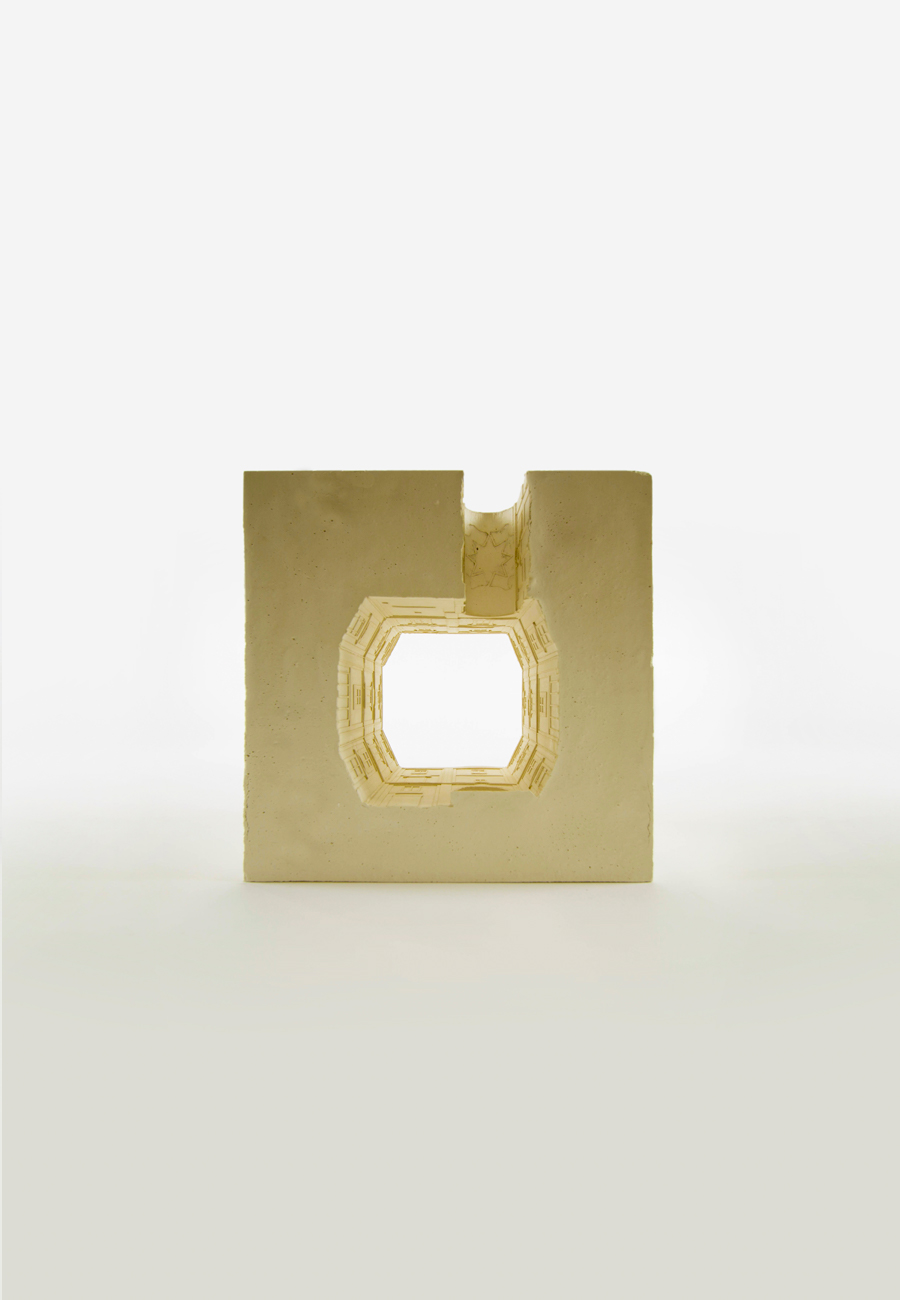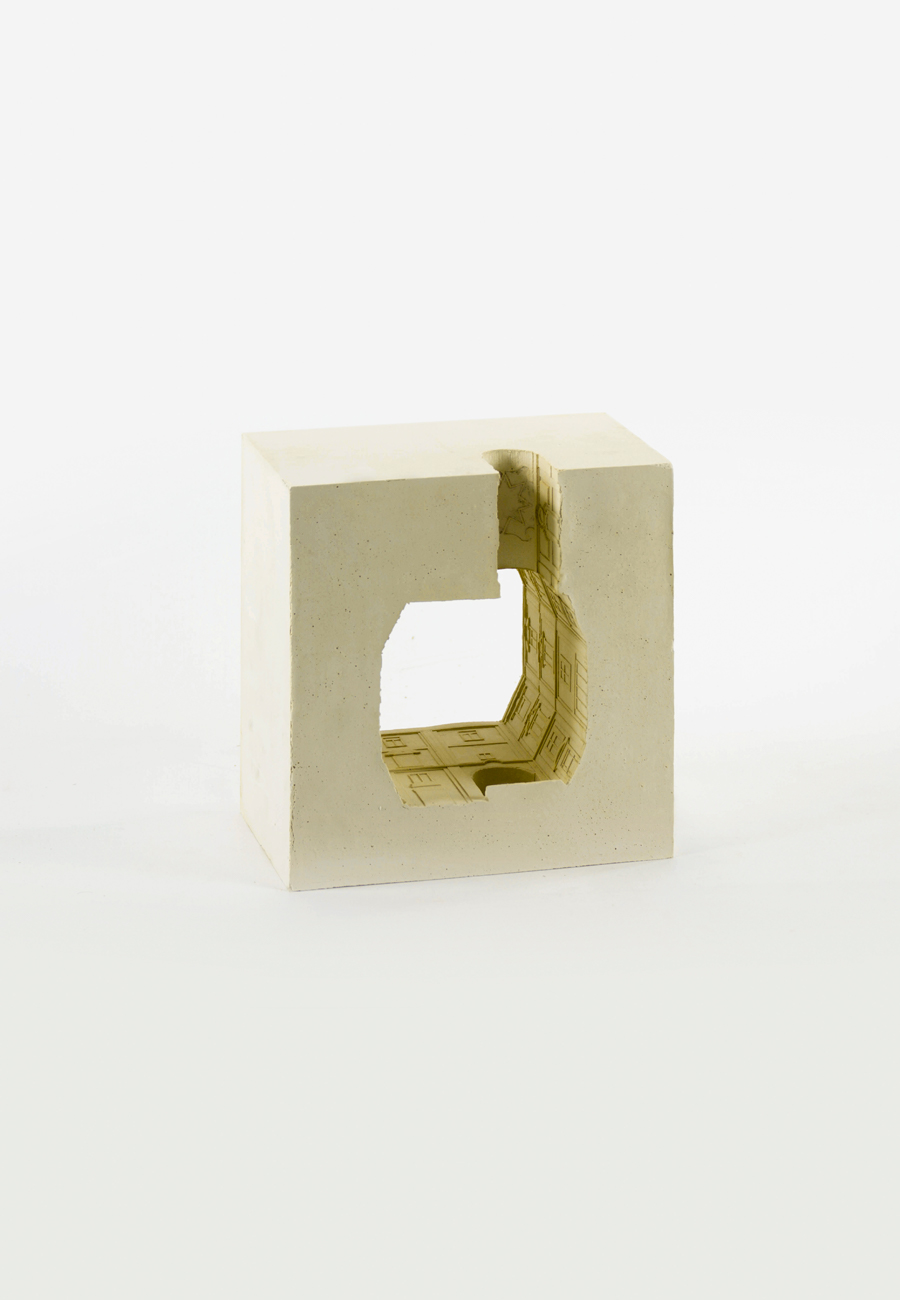

Organized behind the same street façade, the adjoining part of Palazzo Sanfelice has a slightly lower and correspondingly smaller and less grandiose courtyard. The first floor, which in the façade composition of the large courtyard received an almost equal treatment as the piani nobili on the second and third floors, is here visually incorporated in the ground floor façade. The whole façade deceptively comes across as composed of ground floor plus two piani nobili.
The small cortile has a vaguely octagonal lay-out. Contrary to the large courtyard, it is not in axis with the porch, yet its stairs are. The unusual organisation of the plan situates them, not in the centre of the façade, but close to its right hand angle. While the staircase of the large courtyard was prominent already from the street, here it is all but absent, with only the lower steps visible, even after entering the cortile. Enshrined in an arch that is part of the double ground floor façade, the steps seem to flow, like lava, out of two symmetrical holes. At the level where the straight part of the stairs splits up, the two flights swing out to each side and mysteriously disappear under inclined arches into the depth of the building.
Not until the visitor ascends the tunnel-like stairs their stunning complexity and startling inventiveness is revealed. Passing a triangular intermediate landing where a door leads to the subsidiary first floor apartment, the stairs turn the other way. Only at that point one understands how they form bifurcating double spirals that come together, halfway between the first floor and the first piano nobile, on a rhomboid central landing, situated under a surprisingly high and intricate vaulted ceiling. From there on both stairs, now in full view of each other, wind higher for another half-turn around a closed newel crowned by a monumental knob. The steps finally reach symmetrical triangular landings leading to the doors of the first piano nobile apartments. These platforms act as balconies from where one can look back to the surprising and dynamic space below.
It is difficult to imagine a more radically different experience from ascending the large courtyard staircase. Here, the distributive scheme is not at all clear from the start, but unfolds in the process. Its most intimate layout, using the smallest possible spaces, brings about an incredible abundance of forms and perspectives. Yet, what is likely most surprising is the spectacular presence of light: after mounting the steps through the low, dark tunnel, the central space unfolds, flooded with light entering from various hidden openings. One of them is unexpectedly situated above the lower, central part of the stairs. Again, as in the large staircase, decoration is added sparingly: some moulded elements, raised borders, and a few cartouches and corbels with stucco ornaments.
Incomparable to any other staircase in Naples, or for that matter in Italy, it is highly idiosyncratic: a folly turned inward out. The only references may be late-Gothic twin winding staircases in Central Europe, such as the Zwillingswendeltreppe, of 1499, in the castle of Graz, or the bicentral winding stairs of the Rathaus in Nürnburg, both mentioned in Friedrich Mielke’s unsurpassed study of German staircases.¹
At first glance, the small courtyard staircase seems less ‘functional’ than its sibling on the large courtyard: it provides access only to the lower piano nobile apartment. The second piano nobile is accessed from the big courtyard. However, since originally the first piano nobile apartment developed across the whole extent of the courtyard’s first floor, it is not unlikely that one of the two symmetrical doors may have given access, with additional internal stairs, to the second piano nobile.
1. Friedrich Mielke, Die Geschichte der Deutschen Treppen. Berlin/München, Verlag von Wilhelm Ernst & Sohn, 1966; pp. 51-52.